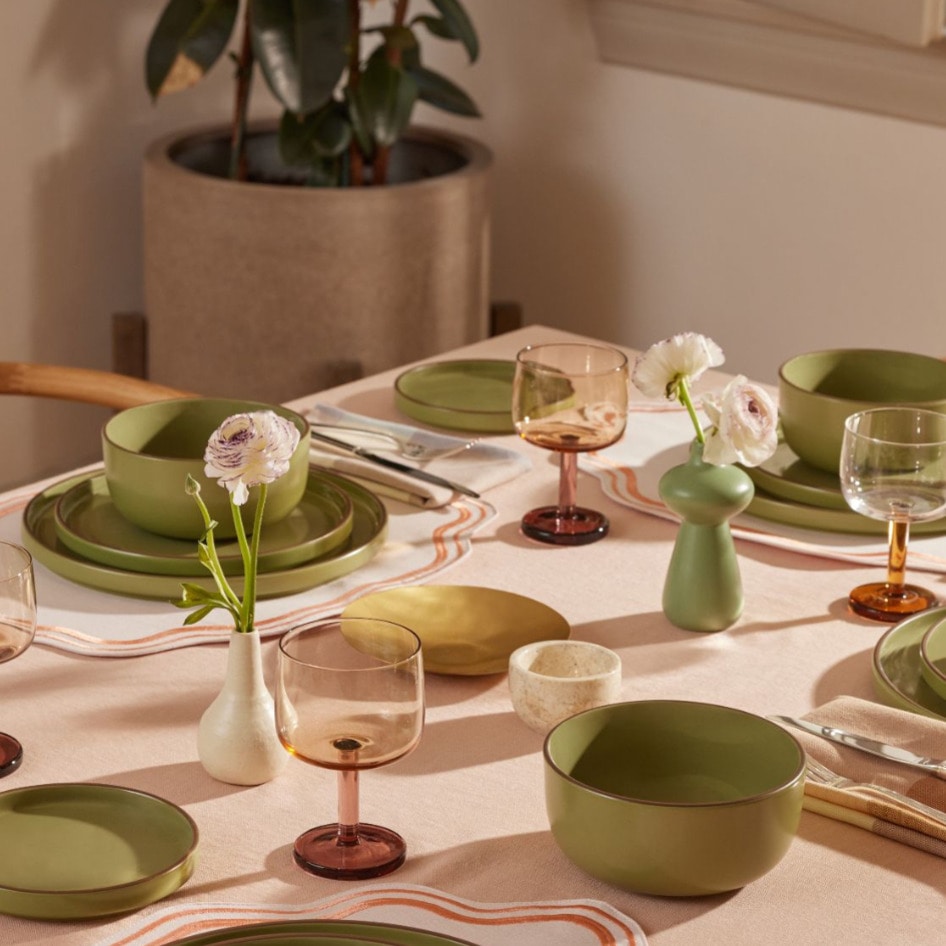We’re all spending more time at home this year, and that’s finally sparked the motivation to make a few improvements. As a professional interior designer with a focus on green living, I incorporate the essentials of design with the consciousness of compassionate living to create spaces where vegans—and the planet—can thrive. Whether you want to make your studio feel less cramped or you’re looking into new, vegan-friendly furniture, follow these seven design tips to refresh your vegan, eco-friendly abode.
1. Create breathing room in your small space.
Stuck in a studio or small apartment? Look on the bright side: smaller dwellings require less energy and resources. Of course, that comforting fact won’t entirely negate the feeling of living in a shoebox. To make a small space more livable, ensure major circulation paths through your home allow for easy travel without feeling squeezed. You shouldn’t have to climb over anything or duck past piled-high stacks of your VegNews subscription to move around at your leisure. Further, having a view into another space with light-colored walls and furnishings significantly increases a feeling of spaciousness and has the added benefit of reducing electricity bills. Vertical lines on walls (think narrow cabinet doors) will create the impression of a taller, larger room. Finally, placing a colorful decorative item or painting against a very light surface will instantly create the illusion of a deeper space and make the object the center of attention. In essence, stick to light colors, and the room will “grow.”
2. Make living greener easy.
Dedicate counter or cabinet space in the kitchen for a compost bin that is conveniently located near the cutting board. Significantly cut plastic consumption by installing a rack for drying rinsed plastic wrap and bags near the sink for convenient reuse. It can be made of decorative brackets supporting dowels or a set of sleek cabinet knobs inside an open shelf or under an existing upper cabinet. Finally, be sure there is easy-to-access storage for all of your recyclables. When green habits are convenient, you’ll be far more likely to stick with them.
3. Invest in longevity.
Buy cruelty-free furnishings that will endure so you can spare the environment of additional waste. Sure, the sofa will eventually need reupholstering, but getting one with a strong frame that will last through your life’s adventures (or someone else’s, if you tire of it) will keep it out of the landfill. Browse through the collections of vegan-friendly furnishers such as Gus Modern—it makes its animal-free leather products out of apples.
4. Give something old a new life.
Thinking about an easy-to-clean, gleaming hardwood floor or table? Buy reclaimed wood from old buildings fashioned into new furnishings and flooring. This choice not only saves trees, but it also results in beautiful wood floors with rich color and a bold figure that’s not seen in wood from immature trees. Pining for a stone top for the vanity? Look for suppliers that stock vintage stone that can be reshaped for custom fit. Need a decorative light fixture? Select a rewired, rescued mid-century beauty. Finally, liven up your dinner table with colorful recycled glass bowls and drinking glasses. Any one of these options will reduce your environmental footprint and add a one-of-a-kind design to your cool vegan eco-home.
5. Pay attention to what is on the inside of soft goods.
It is relatively easy to avoid animal hide upholstery or the angora goat throw, but what about the environmentally harmful materials inside your sofa cushions, pillows, and mattress? We often don’t see it, but even vegan leather furnishing can be stuffed with feather and down. For example, popular home decor store West Elm offers vegan leather sofas, but down is offered as a custom filling option. Opt for kapok or natural latex rubber foam instead of virgin oil-based foam or wool padding. For fluffy pillows and comforters, seek ones filled with recycled polyester fibers. Go through a vegan company, such as Vegan Design, or be sure to read the details section if you’re purchasing through a non-vegan retailer.
6. Revive the space with non-toxic paint.
A quick way to dramatically change the appearance of any interior is to give the walls a fresh coat of paint. Most modern coatings rely on various toxic plastics in their formulas, so look for paint that has fewer or no harmful ingredients. Check out swatches at Clare Paint or Earth Pigments for a plant-based paint you can trust.
7. Be clear about your design and vegan values.
When shopping for your redesign, clearly communicate your objective to salespeople and manufacturers. State that you are looking for a product that doesn’t contain animal-derived ingredients and is environmentally friendly. Don’t hesitate to ask for additional information if tags and brochures don’t list contents. Look and listen for measurable and verifiable statements such as “recycled,” “vegan,” and “non-toxic.” Don’t be afraid to assert your vegan values and never assume something is cruelty-free until you can verify. Just like your design, be bold.
Christine Cavataio is an interior designer and author of Manual Drafting for Interiors who practices cruelty-free and environmentally sustainable design from her studio in Boston, MA.
JUMP TO ... Latest News | Recipes | Guides | Health | Subscribe







